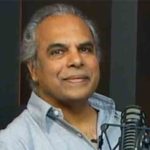Just as our greatest gifts can emerge from the depths of our traumas and wounds, so can our destinies emerge from our fates. However, our destinies cannot emerge until we submit to our fate and commit to work with it. That means standing back and looking at everything that was given to us, everything that has happened to us, and then asking ourselves where the opportunities for self development and self healing lie. If we come from lack, then finding the fullness of our owning lies as an opportunity in front of us. If we come from conflict, then peace and reconciliation awaits us. If we come from abandonment and despair, then a connection to all life stands before us. Whatever the lack, its opposite awaits us. The difficult and challenging aspects of our fate give us the opportunity to leap towards a destiny of our own choosing instead of drowning in that which is less than desirable.
When we submit to our fate, we receive this life and all of its circumstances as a gift, then we can get on with the task of digging for the treasures that await us.
So many of my clients say, “I have this issue, this wound, this problem, and I want it to go away.” When we most want something to ‘go away’ or we want to ‘get rid’ of it, it tends to stick to us like a paste. The objective is not to rid ourselves of the wound, but to change our relationship to it. When a parent loses a child, that wound never goes away; it remains for life. However, over time, the nature of the wound and how it operates in the parent’s life can change and transform. This is also true of our own deeper wounds.
Healing our wounds seem to progress through three stages: Burden, Teacher, Companion.
Burden
We know when our wound is a burden when we are often stuck in blame and self pity. We invariably allow ourselves to be triggered by others and tend to view other people and the world through the glasses that the trauma had placed on our eyes. When our wound is a burden, we take less responsibility for ourselves and our reactions and frequently find ourselves either in conflict or in withdrawal. We interpret the actions of others through the lens of our wound, and we frequently re-create the same circumstances over and over again, often with different people. However, when we step back and look through the eyes of our greater self, the occurrences often have more to do with our reactions rather than with what actually happened.
We become stuck in burden when we need others to change or to give us what we didn’t get. We remain stuck in burden when we stubbornly refuse to accept the painful truth that we didn’t get what we needed because the fear of facing it seems far too much for us to bear. We remain stuck in burden when we allow our suffering to continue as a way of saying to others, “Look what you did to me!” We remain stuck in burden until the moment we decide to give up the need to get what we didn’t get from others and start focusing on self-care and fulfilling our own needs.
Teacher
At the next stage of living and working with our wounds, we are still reacting, projecting, blaming, and falling into self-pity, but we have become more aware of what we are doing. At this stage we are able to retrospectively view what happened to us, our reactions, our masks, and our defenses with a little more neutrality and honesty. We have become much more self-aware and are able to take much more self responsibility and begin to truly address the trauma and the way it works in our lives.
One of the challenges of this stage is to be gentle with ourselves. If we have come from a family in which we were frequently criticized, then we are likely to beat ourselves up a lot at this stage, which simply cuts even deeper into our wound and makes it more difficult to see. Gentle self-awareness and self-love is what is required here.
Companion
At this stage our wounds become our friends. In situations where we would have normally found ourselves triggered into a defense, we become aware of our own trauma response in the background and gently decide to not sink into defense. If we do go into a negative reaction, we take immediate responsibility for it and gently seek more gentle, self-healing work that feeds and nourishes our soul.
While it is true that others can still hurt us and our reactions may still be triggered by events in the present that stimulate old wounds, when our wounds are our companions, we react with less voracity. When our wound is our friend, our compassion increases and we can see others beyond the masks of their own wounds and defenses. We recognize them for who they truly are and how they are feeling in the moment. We no longer blame or push back, but stand with both feet firmly on the ground and with an open heart. We no longer feel the need to be forgiven or to forgive, but simply to be in the present moment with what is presenting itself. When our wound is our friend, we can withdraw peacefully until a better opportunity presents itself and deal with the matter at hand in a more constructive manner.
As we embrace our wounds, first as companions and then as teachers through life, we can begin to submit to our destiny. We can see our fates, that our childhood and other circumstances are what they are and are unchangeable. And in submitting to our fate be begin to see the opportunities for growth inherent within the trauma and the many opportunities that have been presented to us. For many of us, it is the search for solutions to our pain that leads us onto a path where we encounter our own soul and the much greater part of ourselves. It can even lead us to the Divine.
Based on an article by John Payne.



